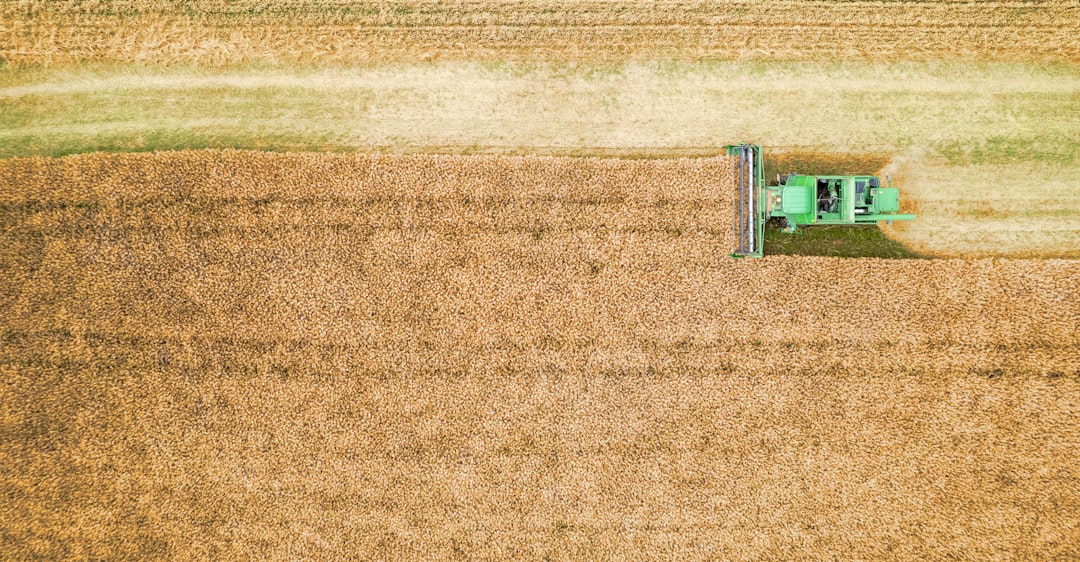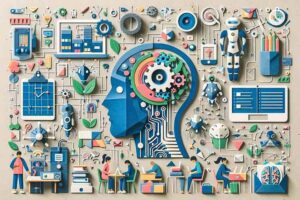The timeless image of a farmer surveying their fields, relying on generations of intuition and experience, is undergoing a profound transformation. Today, that same farmer might be looking at a tablet displaying a detailed, color-coded health map of their crops, data gathered just moments before by an autonomous drone. This is not science fiction; it is the reality of modern agriculture, a sector being fundamentally reshaped by the powerful fusion of artificial intelligence and unmanned aerial vehicles (UAVs). This convergence is at the forefront of the Drones & AI News landscape, heralding a new era of “precision agriculture.” By leveraging AI-driven analytics and aerial data, farmers can now make hyper-informed decisions, boosting yields, enhancing sustainability, and optimizing resource management on a granular level never before possible. This article delves into the technical intricacies, real-world applications, and future trajectory of this agritech revolution, exploring how flying robots and intelligent algorithms are cultivating the future of global food production.
The Dawn of Precision Agriculture: An Overview
Precision agriculture represents a paradigm shift from traditional farming’s one-size-fits-all approach to a highly targeted, data-centric methodology. Instead of treating an entire field as a single unit, it enables farmers to manage variations within that field, optimizing inputs and interventions down to the square meter. This is where the synergy of drones and AI becomes a game-changer, turning vast expanses of land into detailed digital canvases ripe for analysis.
What is Precision Agriculture?
At its core, precision agriculture is about doing the right thing, in the right place, at the right time. The primary goal is to increase the efficiency of inputs such as water, fertilizer, and pesticides while simultaneously improving crop quality and yield. By understanding the specific needs of different zones within a field, farmers can avoid over-application of chemicals, which reduces costs and minimizes environmental impact. This data-driven approach transforms farming from a reactive practice to a proactive, predictive science, a trend also seen in the development of AI Gardening / Farming Gadgets News for smaller-scale operations.
The Foundational Role of Drones and AI
In this new paradigm, drones serve as the primary data acquisition platforms. These are not mere hobbyist aircraft; they are sophisticated industrial tools equipped with an array of advanced sensors. They function as mobile hubs for the latest in AI Sensors & IoT News, autonomously flying pre-programmed routes to capture high-resolution imagery and data far beyond the capabilities of the human eye or ground-based observation. This collected data, often amounting to gigabytes or even terabytes per flight, is where AI steps in. AI algorithms, particularly machine learning and computer vision models, act as the analytical engine. They sift through this massive dataset to identify patterns, detect anomalies, and generate actionable insights. From spotting a pest outbreak before it spreads to calculating the precise amount of nitrogen a specific patch of soil needs, the combination of aerial perspective and intelligent analysis provides unprecedented situational awareness. This is a leading application featured in AI-enabled Cameras & Vision News, showcasing how intelligent vision systems are moving beyond security and into complex industrial domains.
The Technology Stack: A Deep Dive into Agri-Drones
The effectiveness of an agricultural drone system lies in its sophisticated technology stack, a combination of robust hardware and intelligent software. Understanding these components reveals how these flying robots can perform such complex and valuable tasks. This technology shares DNA with advancements in Autonomous Vehicles News, as both fields rely on sensor fusion, pathfinding algorithms, and real-time decision-making.
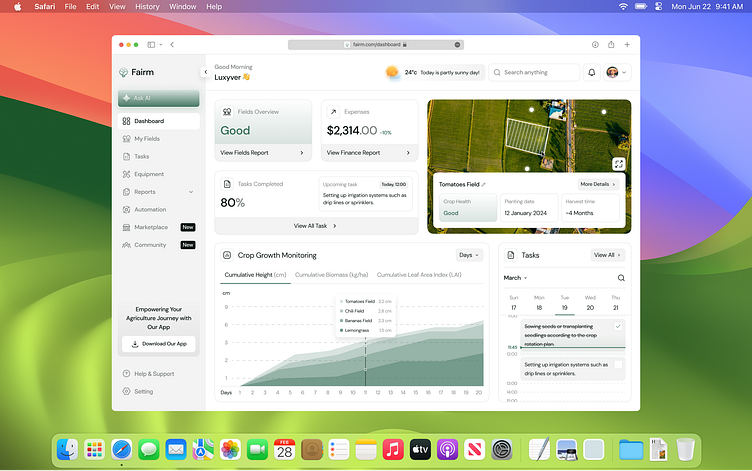
Hardware: More Than Just a Flying Camera
The drone itself is just the platform; its true power comes from the specialized payloads it carries. Different farming applications require different hardware configurations.
- Drone Platforms: The two most common types are multi-rotor (e.g., quadcopters) and fixed-wing drones. Quadcopters offer high maneuverability and the ability to hover, making them ideal for detailed inspection and spot-spraying. Fixed-wing drones can cover much larger areas more quickly and efficiently, making them suitable for mapping vast commercial farms.
- Sensors and Payloads: This is where the magic happens. The latest AI Monitoring Devices News is often driven by sensor innovation.
- RGB Cameras: High-resolution cameras provide a detailed visual record, useful for manual inspection, plant counting, and assessing visible damage.
- Multispectral & Hyperspectral Sensors: These are the workhorses of crop analysis. They capture data from specific bands of light beyond the visible spectrum (e.g., near-infrared). By analyzing how plants reflect this light, AI can calculate health indices like NDVI (Normalized Difference Vegetation Index), which is a direct indicator of plant vigor, stress, or disease. This mirrors technology in Health & BioAI Gadgets News, but applied to flora instead of fauna.
- LiDAR (Light Detection and Ranging): LiDAR sensors use laser pulses to create highly accurate 3D topographical maps of the terrain and measure plant height, density, and biomass.
- Thermal Sensors: These sensors detect temperature variations across a field, which can pinpoint issues with irrigation and identify areas of water stress long before the plants show visible signs of wilting.
Software and AI: The Brains of the Operation
The hardware collects the data, but the software and AI models turn that raw data into wisdom. This process involves several stages.
- Flight Planning and Automation: Modern drone operations are fully automated. Farmers use software to outline the field on a map, set parameters like altitude and image overlap, and the system generates an optimal flight path. The drone executes this mission autonomously, a specialized form of the technology highlighted in AI Assistants News.
- Data Processing and Computer Vision: Once the drone lands, the data is processed. AI models trained on vast agricultural datasets perform complex tasks:
- Stitching and Orthomosaics: Thousands of individual images are stitched together to create a single, high-resolution map of the entire field.
- Object Detection: Algorithms can identify and count individual plants, locate specific types of weeds, or detect the presence of pests.
- Predictive Analytics: By combining current data with historical trends and weather forecasts, AI models can predict future crop yields with increasing accuracy.
- Edge vs. Cloud Computing: A key trend in AI Edge Devices News is the move towards on-device processing. For time-sensitive tasks like identifying weeds for immediate spot-spraying, some AI processing can occur directly on the drone. For more intensive analysis, the data is typically uploaded to the cloud where powerful servers can run complex models and integrate the findings into a farm management platform.
From Fields to Feasibility: Real-World Impact and Applications
The theoretical benefits of AI and drones in agriculture are being realized in fields across the globe, delivering tangible returns on investment and driving sustainable practices. These applications demonstrate a level of operational intelligence that could one day inform the management of entire ecosystems, a concept explored in Smart City / Infrastructure AI Gadgets News.
Case Study: Water Optimization in California Vineyards
In the water-scarce regions of California, vineyard managers are using drones equipped with thermal and multispectral sensors to optimize irrigation. A weekly drone flight can generate a detailed water stress map, identifying specific rows or even individual vines that are receiving too much or too little water. This data allows for precise adjustments to drip irrigation systems, not only conserving millions of gallons of water but also improving grape quality by ensuring uniform hydration. This leads to a more consistent and higher-value harvest, demonstrating a direct link between advanced sensor data and profitability.
Case Study: Nutrient Management in Midwest Cornfields
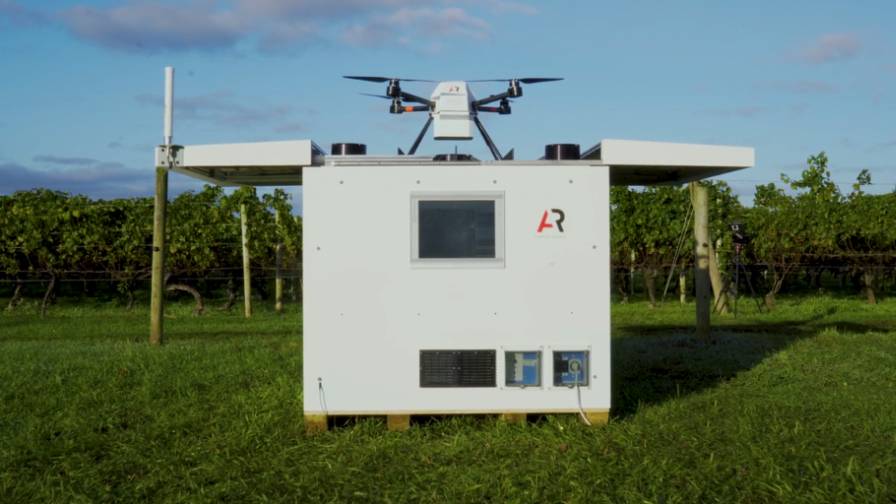
For large-scale grain farming, fixed-wing drones map thousands of acres to monitor crop health. By analyzing multispectral imagery, AI algorithms create precise prescription maps that highlight areas with nitrogen deficiencies. This map is then fed directly into the GPS-guided systems of modern tractors and sprayers. These machines then perform Variable Rate Application (VRA), applying more fertilizer only where it’s needed and reducing it elsewhere. This practice cuts fertilizer costs by up to 30%, prevents nutrient runoff into waterways, and boosts overall yield by ensuring the entire crop receives optimal nutrition. This seamless integration of aerial drones and ground-based autonomous machinery is a key theme in Robotics News.
Global Adoption and Skill Development
This technological revolution is not confined to developed nations. In emerging economies, agritech startups are offering “drones-as-a-service” models, making this technology accessible to smallholder farmers who cannot afford the initial investment. In regions across Asia and Africa, drones are used for targeted pesticide spraying on crops like rice and sugarcane, reducing human exposure to harmful chemicals and improving application efficiency. This global adoption is being fueled by new educational initiatives and training programs that equip the next generation of agricultural professionals with skills in AI, data science, and robotics. This focus on practical, tech-forward training is a crucial aspect of the wider AI Education Gadgets News trend, ensuring a skilled workforce is ready to leverage these powerful new tools.
Navigating the Future: Challenges, Best Practices, and What’s Next
While the potential of agricultural AI and drones is immense, widespread adoption is not without its hurdles. Navigating these challenges requires strategic planning, adherence to best practices, and a clear vision for the future of interconnected, autonomous farming.
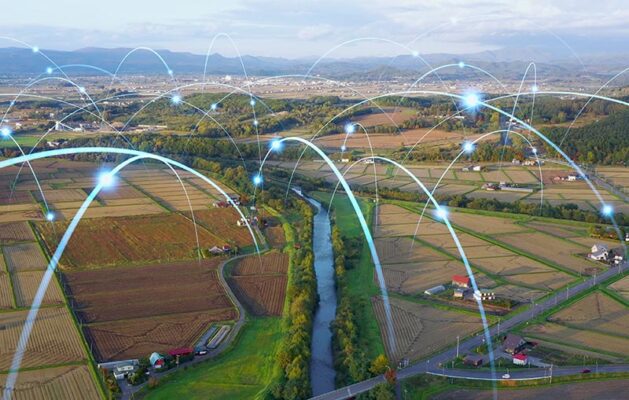
Common Pitfalls and Challenges
- Regulatory Complexity: Aviation authorities worldwide have varying and evolving regulations for drone operation, particularly concerning flights beyond the visual line of sight (BVLOS), which are essential for covering large farms efficiently.
- High Initial Investment: The cost of industrial-grade drones, and especially specialized sensors like LiDAR or hyperspectral cameras, can be prohibitive for many farmers.
- The Skill Gap and Data Overload: A drone can collect a staggering amount of data. Without the expertise to interpret it correctly, this data is useless. Farmers either need to become data analysts or rely on agronomists and service providers to translate the data into actionable plans.
- Rural Connectivity: Many farming regions suffer from poor internet connectivity, which can be a major bottleneck for uploading large datasets to the cloud for processing.
Best Practices for Implementation
- Start with a Clear ROI: Begin by identifying a specific, high-cost problem that technology can solve, such as weed management or water stress, to ensure a clear return on investment.
- Pilot and Scale: Test the technology on a small section of the farm first to understand the workflow and validate the results before scaling up to the entire operation.
- Prioritize Data Integration: Choose solutions that can integrate seamlessly with existing Farm Management Information Systems (FMIS) to create a unified, holistic view of the farm’s operations.
- Partner with Experts: For those new to the technology, partnering with a reputable agritech service provider can bridge the skill gap and accelerate the learning curve.
The Future is Autonomous and Interconnected
The next frontier in Drones & AI News for agriculture is hyper-automation. This involves creating an interconnected ecosystem where different technologies work in concert. Imagine a future where a scouting drone detects a pest infestation, and its AI automatically dispatches a larger spraying drone to treat the specific area within minutes. This system could also include ground-based robots, or “agbots,” for tasks like weeding or harvesting, all coordinated by a central AI platform. This vision of interconnected, autonomous systems working in harmony is the ultimate goal of precision agriculture.
Conclusion: Cultivating a Smarter Future
The integration of artificial intelligence and drones is far more than an incremental improvement in farming; it is a fundamental re-imagining of how we grow our food. By providing an unprecedented level of insight and control, this technology empowers farmers to be more productive, profitable, and sustainable. The journey from traditional practices to data-driven precision agriculture is accelerating, driven by continuous innovation in sensors, robotics, and machine learning. As these tools become more accessible, intelligent, and autonomous, they will play a critical role in addressing some of humanity’s greatest challenges, from ensuring global food security to promoting environmental stewardship. The developments in this field are a powerful reminder that the most impactful Drones & AI News is often not about consumer gadgets, but about foundational technologies that are quietly and profoundly reshaping our world for the better.





